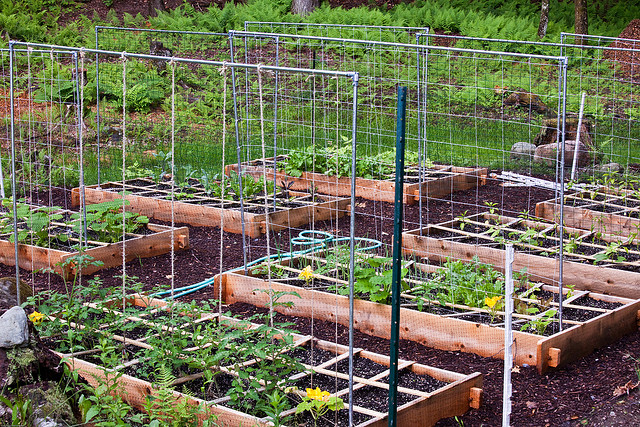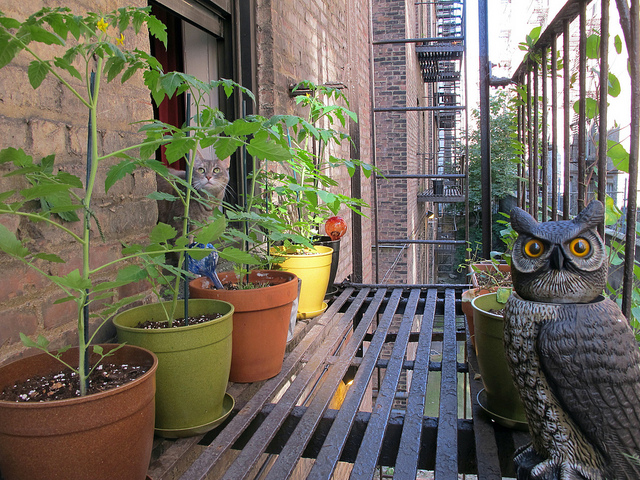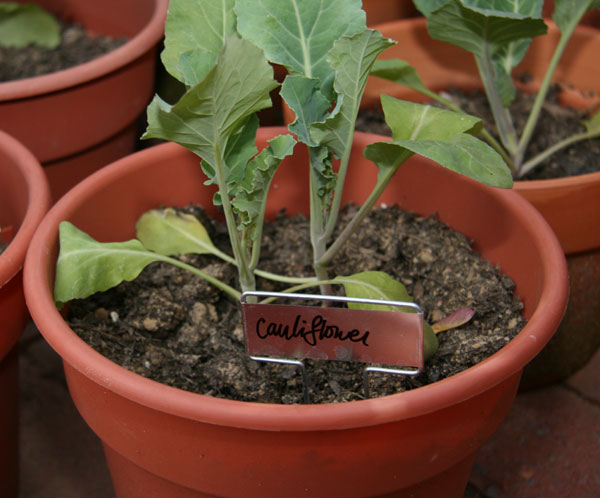Take it from a gardener who has made every mistake in the book, it pays to plan out your garden thoroughly. It’s not the most fun gardening task, but it’s entirely essential to a successful spring planting. Before you ever open a seed catalog or dig out those gardening tools, put pen to paper and start planning with these early spring gardening tips!

Photo via Flickr Creative Commons user Patrick
I keep a gardening notebook every year. I sketch out a layout for the garden, including bed sizes and container placements. Each plot in the garden is carefully configured and every detail is written, down to the variety planted and how many per space. Keeping good gardening records will be a huge help for planning out next year’s garden.
There are a number of things you’ll need to think about and decisions to make before you get planting. This guide will help you to get it all on paper before you head to the garden center for the first time.
Things to consider for your spring garden plan
Size
If you’re just getting into gardening for the first time, it helps to start small. It’s very easy to get overly ambitious and plant more seeds than you have time to care for. For beginners, somewhere between a 5′ x 5′ and 10′ x 10′ foot plot will be plenty.
The size of your garden matters a great deal. Some plants are space hogs and some can be tucked into corners here and there and be just fine. If you’re hoping to grow behemoths like corn and melons, make sure right off the bat that you have the space for them. There’s a reason these guys are usually grown in wide open fields — they need it.
Location
The next step to planning out your garden will be to decide on a location. Some would say this is the most important step. A good garden needs fertile soil, good drainage, plenty of sun and protection from pests. Make sure your location will allow you to put up a fence if needed, and be sure it won’t be a point of contention with your neighbors.
It pays to get the soil from your chosen location tested early on to be sure it can support your plants. If it needs to be amended, it’s good to know sooner rather than later. Also pay close attention to the type of soil you’re dealing with. If it’s clay or sand based, it may not drain properly and cause problems down the road. Your local cooperative extension can help with soil types and tests.
It’s safe to say most plants enjoy a space with full sun and fertile soil. Make sure the place you choose will get sun for most of the day, as well as most of the season. The last thing you need is for your beautiful, sunny spot to become suddenly shaded by trees as the seasons change.

Photo via Flickr Creative Commons user Ruth Hartnup
Gardening system
Do you want to grow in raised beds? Dying to try out square foot gardening? Feel safe with the classic row garden? There are planting systems to fit every individual need. Decide on your planting system now so you’ll know how much space you need and which supplies to purchase
Classic row gardening
While row gardening has fallen out of fashion in recent years, it’s still a perfectly reliable system if you have the space for it. Planting in neat little rows is also great for the health and pollination of many common crops. If you’re planning to plant in rows, think ahead and make a plan for pest control, weed defense and trellis use.
Container gardening
If you’ve been dreaming of a beautiful backyard garden but don’t have a lot of space, a container garden is your answer. An abundance of plants can be grown in containers on patios, decks, balconies and rooftops. As long as you have access to some sun, you can grow in pots. Plants of almost every sort, from flowers and veggies to fruit trees can grow comfortably in a container.

Photo via Flickr Creative Commons user Kristine Paulus
Raised beds
Similar to container gardening, raised bed gardening is great if you have limited space, terrible soil or mobility problems.
Raised beds are a favorite among gardeners for many reasons. For starters, the soil can be catered to your needs, as you will be filling your beds rather than using what’s already available. The soil in these beds is never stepped on, which means it never becomes compacted. This allows it to drain excess water out quickly. The soil in these beds also warms more quickly in the spring, giving you a longer growing season.
Square foot gardening
Square foot gardening is basically employing the use of a raised bed, but involves the use of a grid and specially made soil to plant crops close together. Square foot garden beds are perfect for gardeners in urban or suburban areas who don’t have a lot of space to work with. They also boast less weed and pest problems and more prolific plants.
Choose plant varieties
A general rule of vegetable gardening is to plant what you eat. It may seem obvious, but many gardeners make the mistake of planting a whole bed of a crop they’ve never tried, then have to find homes for their veggies when they discover they don’t care for the flavor. It’s too easy to fall into the seed catalog ploy of buying colorful chard or super-sized beans, but if you don’t eat them, what’s the point?
If you’re a first-time gardener, consider trying some easy-to-grow plants, such as mixed greens, beans or zucchini (and see our post on the 5 easiest vegetables for your first garden). If you have more experience, try venturing into the land of melons, pumpkins or peppers.
When choosing plant varieties, think about how long your growing season is (the time between last frost and first frost), and how much space you have to grow the plant. These two factors will help you decide which seeds or starts to get. Don’t forget to have fun with it! Practicality is a wonderful thing, but part of the joy of seed catalogs and garden centers is the abundance of beautiful and interesting crops inside.

Photo via Flickr Creative Commons user Lollyknit
Consider companion planting
Once you’ve planned out your gardening system and plant varieties, you may consider looking into companion planting. In companion planting, plants are placed near their plant “buddies” who help them to thrive. Some plant buddies ward off pests and disease, others boost the flavor of the crops around them, and help each other grow by providing shade or something to climb.
The traditional three sisters garden is a great example of companion planting. The corn grows fastest, and provides a hearty stalk for the next crop, beans, climb up. Squash is planted at the base of the plants and the large leaves provide cover for the ground to eliminate water evaporation. Beans are nitrogen fixers, and their presence improves the soil so the corn and squash can thrive. All the plants live within harmony and help each other to be their best.
If you’re interested in companion planting, there are an abundance of books on the market to help you out, and you can keep your eye on us for future posts on companion planting!
Now it’s time to stop reading, get out that notebook, and get planning, spring is coming!

Love these subjects